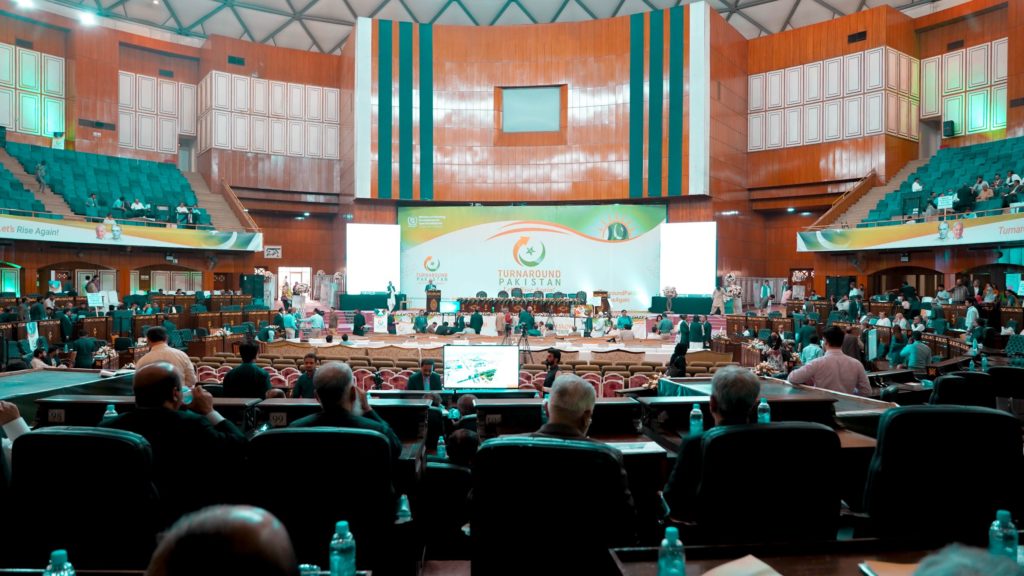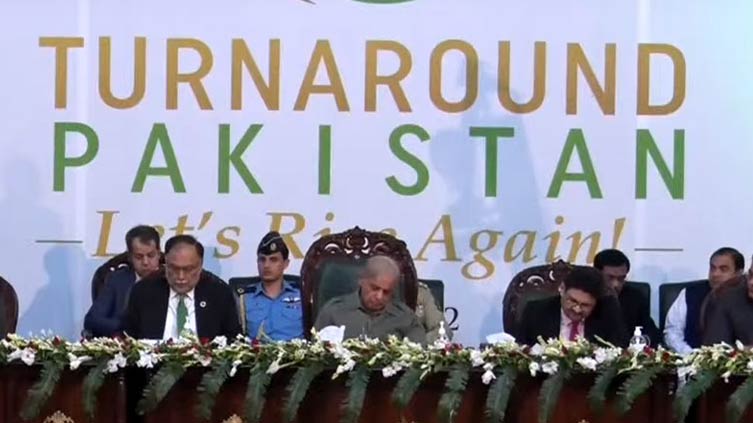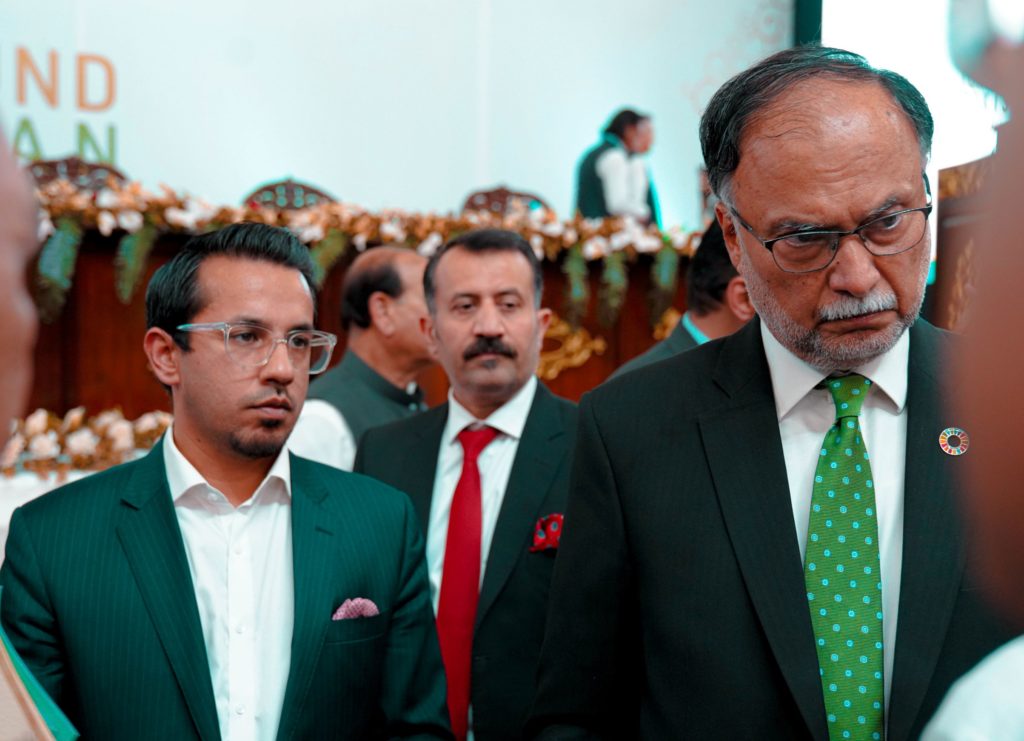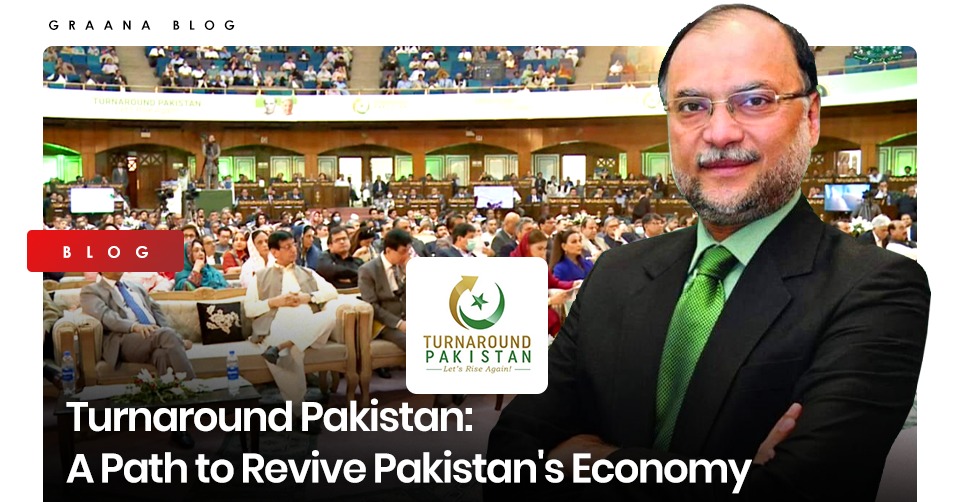With a struggling economy and several internal and external geopolitical and financial challenges, Pakistan is currently going through an inflation cycle. The government has highlighted the need to take quick, solid steps to push the economy in the right direction and end the longstanding problem. Turnaround Pakistan Conference is the first step in the practical implementation of ‘Vision 2025’ for the revival of Pakistan’s economy.
Turnout Pakistan Plan
To balance the payment crisis and stabilise the economy, the Minister of Planning, Development and Reforms Ahsan Iqbal decided to initiate the Turnout Pakistan Plan. It is the concept to draw a roadmap with medium and long-term policies to stabilise the economy and strengthen the human capital. The program will focus on ‘Vision 2025’ and ‘Vision 2047’. For the practical implementation of various policies, the Turnaround Pakistan Plan will be executed with the help of officials from both the public and private sectors.
Understanding the need for political stability, the government will also invite individuals from all major political parties. Moreover, provincial governments and federal ministries, private sector entrepreneurs, international financial and development institutions, think tanks, individual experts, NGOs, parliamentarians, and representatives from the civil society will all take part in the rebuilding process.
Turnaround Pakistan Conference
The first step in this process was the Turnaround Pakistan Conference, where individuals from all walks of life came together and took part in different workshops. The participants were divided into 7 thematic groups, representing the different sectors and domains of development. Graana.com, Pakistan’s smartest property portal, was the media partner at the conference.
Prime Minister of Pakistan Shehbaz Sharif was also in attendance as the chief guest. While expressing his views about the Turnaround Pakistan Conference, he stated that the contributions of both the public and private sectors are necessary for the sustained economic development of Pakistan. He further added that real estate is the largest sector in the country, and it plays an instrumental role in the revival of the economy.
Objectives of Turnaround Pakistan Conference
The conference focuses on bringing experts from various fields and making them work in close coordination with both the public and private sectors. The objectives of the conference include the launch of training programs across the provinces and AJK. The outcome will provide a short to medium-term framework for more informed policy-making.
Moreover, certain progress indicators will be established across all domains. A system will monitor the progress of defined growth indicators, and eventually help in building the momentum in economic gains.
Vision 2025

Vision 2025 is the first goal of Turnaround Pakistan, which consists of 7 major pillars as key drivers in the growth and stability process to transform Pakistan’s economy. However, to work on these 7 pillars, stable political conditions, rule of law and justice, and peace and security have been defined as the prerequisites.
7 Pillars Of Vision 2025 | Turnaround Pakistan
Pillar-I – Putting people first: developing human and social capital
Pillar-II – Achieving sustained, indigenous and inclusive growth
Pillar-III – Institutional reform and democratic governance
Pillar-IV – Energy, water & food security
Pillar-V – Private sector-led growth
Pillar-VI – Improving national competitiveness
Pillar-VII – Modernisation of transportation infrastructure & greater regional connectivity
Each has been briefly discussed below.
Pillar-I – Putting People First: Developing Human and Social Capital

For all nations across the world, the development of their human and social capital is a priority. All the policies are designed for the well-being and improved quality of life of the citizens. So, the first pillar of Vision 2025 aims to strengthen and improve the economic conditions of the population. To empower them economically, policies will be introduced all across the country on micro and macro levels.
These policies will help in helping Pakistani citizens rise above the poverty line.
Pillar-II – Achieving Sustained, Indigenous and Inclusive Growth
Currently, Pakistan faces a rift among communities at intra and inter-provincial levels. A vast majority of the population complains about the unequal distribution of the resources. Vision 2025 aims at a sustained and inclusive growth. Indigenous resources will be used to create equal opportunities for everyone across the country.
An equitable and united community with a balanced development approach can help bring prosperity to the country.
Pillar-III – Institutional Reform and Democratic Governance
An effective governance system, where there is a rule of law and people can enjoy their rights, is the harbinger of a progressive society. Moreover, for every country, its institutions play the biggest role in the development of its human and social capital through various policies. Through Vision 2025, the government is aiming to strengthen the institutions through positive reforms in administrative infrastructure and regulatory framework.
To adopt technology and best global practices, a result-focused, motivated, and skilled ‘civil services institute’ will be established. It will maximise institutional power and transform different sectors of development. Moreover, Vision 2025 also aims at exploring the powers of the 18th Constitutional Amendment to help all the units of the federation in establishing equality through maximum opportunities and better use of their resources.
Pillar-IV – Energy, Water & Food Security

Due to extreme climate changes in the past few years, the water and food security of Pakistan have been threatened. Several researchers are predicting extreme water shortages in the coming years. Therefore, to meet the challenge with effective strategies, Vision 2025 aims at building a strong partnership between the public and the private sectors.
Vision 2025 is not only about economic stability; it is a complete package that aims at transforming all industries. By ensuring energy, water, and food security, we can focus on more critical problems.
Pillar-V – Private Sector-Led Growth | Turnaround Pakistan
Vision 2025 is to make Pakistan a highly appealing location for capital investment that allows economic growth. It aspires to establish continuous private sector participation in which all resources and talents are used to meet the specified objectives.
Pillar-VI – Improving National Competitiveness
National competitiveness refers to a country’s capacity to manufacture and distribute goods and services efficiently and economically compared to competing countries. Improving our national competitiveness is thus crucial to use our resources productively, based on merit, quality, and innovation.
Vision 2025 aims for a significant increase in competitiveness in the industrial/manufacturing, service, and agricultural sectors. Competitiveness is about improving efficiency and productivity to enable self-sustaining firms, boosting their global presence and elevating the nation’s overall wealth and well-being.
Pillar-VII – Modernisation of Transportation Infrastructure & Greater Regional Connectivity
Vision 2025 aims to create a robust transportation infrastructure to aid in the growth of a competitive economy. Transportation cost reduction, mobility safety, the effective interconnection between rural regions and markets/urban centres, high-speed connectivity between economic hubs (including air, sea, and dry ports), and high operational corridors connecting regional partners are the key targets.
A regional connectivity strategy programme is being developed. Its aim is to link Pakistan through improved physical infrastructure investment, institutional connectivity, and empowered communities. Increasing regional connectedness necessitates not only the establishment of new policies and systems but also investment in the more effective execution of current and future efforts.
The strategies designed under Vision 2025 recognize the fact that achieving long-term economic stability in such a short period is not feasible. However, working in steps can help Pakistan achieve better results in the coming years.
In the initial stages, the government is focusing on achieving sustained GDP growth of 5-6% per year. Deep and sustained reforms will help this GDP eventually gain momentum and achieve targets above 7% in the coming years.




